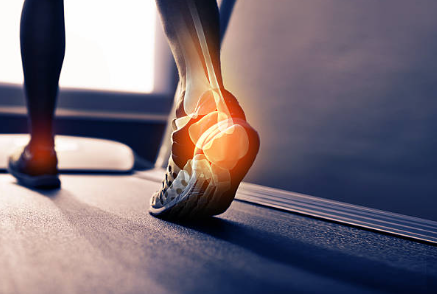
Understanding Foot Types
The shape of the foot can reveal a lot about an individual's gait and posture. By observing the positioning of the foot, it is possible to identify three distinct foot types: supinated, neutral, and pronated.
Supinated Foot Type
The supinated foot type is characterized by the following features:
- Outward rolling of the foot during walking.
- High arches.
- Wear on the outer edge of the shoes.
Pronated Foot Type
The pronated foot type exhibits the following characteristics:
- Low arches.
- Inward rolling of the ankle during walking.
- Calluses under the ball of the foot and the big toe.
- Wear on the inner edge of the shoes.
Choosing the Right Footwear
Each foot type requires specific footwear to provide adequate support and stability.
For individuals with pronated feet, it is recommended to opt for shoes that offer easy motion control and sturdy support. On the other hand, supinated feet require shoes with ample cushioning. When selecting suitable footwear, it is essential to consider three key features: the shape, construction, and heel counter of the shoes.
Shape
The shape of the shoe, specifically the curvature of the last, determines its suitability for different foot types. For supinated feet, curved-last shoes are ideal due to the curved shape of the foot.
Construction
The construction of the shoe's midsole and cushioning plays a crucial role in providing support and shock absorption. For supinated feet, slip-last shoes with excellent flexibility are recommended. In contrast, board-last shoes, known for their robustness, are more suitable for individuals with pronated feet.
Heel Counter
The heel counter, a cup-shaped part at the back of the shoe, is particularly important for individuals engaged in active sports. A firm heel counter is advisable for those with an active lifestyle.
Midsole
The midsole of the shoe is responsible for cushioning and shock absorption. For pronated feet, a dual-density midsole offers the ideal combination of stability and cushioning, while supinated feet benefit from a single-density midsole with superior cushioning.
Knowing When to Replace Your Shoes
It is recommended to replace your shoes after approximately 600 miles of use to ensure the continued functionality of the shoe's sole.
Understanding the nuances of foot types and selecting the appropriate footwear can significantly impact an individual's comfort and overall well-being. By paying attention to these details, individuals can make informed decisions when choosing the right shoes for their unique foot type.
'실생활 정보 세상의 정보' 카테고리의 다른 글
| The way to make tasty fried food (0) | 2024.01.17 |
|---|---|
| The use and examples of the back court (0) | 2024.01.17 |
| The history of HACCP (0) | 2024.01.16 |
| Principle of proportionality in administrative law (0) | 2024.01.15 |
| Everything about data roaming charges (wireless internet fees) (0) | 2024.01.14 |



